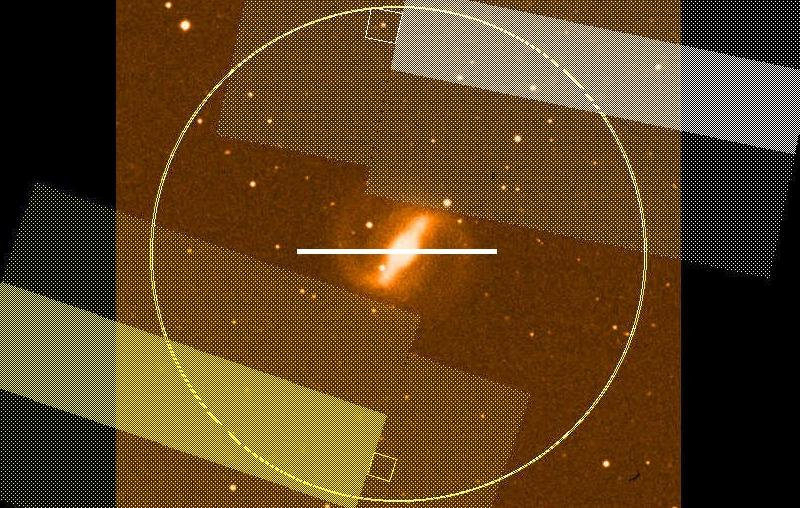![[GMOS logo]](gmoslogo.gif)
| You are in: Instruments > GMOS > Performance and Use > GMOS Components > Use of PWFS |
![[GMOS logo]](gmoslogo.gif) |
Use of the PWFSs with GMOS |
The Peripheral wavefront sensors (PWFS) vignet a large part of the GMOS science field. Further, it has been found that there is significant flexure between GMOS and the PWFSs. At this time it is therefore recommended to use the on-instrument wavefront sensor for all GMOS observations with the probable exception being for non-sidereal tracking since the OIWFS implementation is purely electronic and limited to the field of view radius of the lenslet array.
At a later time when the flexure between the PWFSs and GMOS has been modelled and can be corrected for, the PWFSs may be used for long-slit and IFU observations, where it is possible to select guide stars such that the slit or IFU is not vignetted. An example for long-slit spectroscopy is shown below. The advantage of using the PWFSs is that higher order corrections (such as closed-loop active optics corrections) are possible.

In original form; Isobel Hook
Previous update February 22, 2002; Inger Jørgensen
Last update August 30, 2006; Kathy Roth